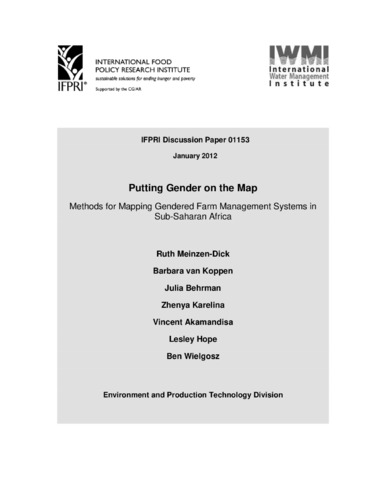Putting gender on the map: Methods for mapping gendered farm management systems in Sub-Saharan Africa
Abstract
Although the different roles of men and women in agriculture in different parts of Sub-Saharan Africa have been widely acknowledged, there have not been consistent efforts to collect data on these patterns. This paper presents a way of classifying gendered farm management systems and then describes pilots of four different approaches to collecting and georeferencing information on the dominant pattern in each area. Case studies from existing literature provided valuable insights but represent a time-consuming method, limited in spatial coverage and often leaving gaps because the original study authors did not report on all of the aspects of interest for a gendered farm management systems analysis. Expert consultations conducted in Ghana and Zambia allowed for dialogue among participants during map development, permitting them to explore nuances and dynamics. However, this technique may be restricted in scale to one country at a time, limiting cross-national comparison. An open online survey, or crowdsourcing, of the information tapped into a wide range of expertise, providing difficult-to-obtain widespread coverage, but had inconsistent data quality. Mapping of georeferenced information from nationally representative data could potentially provide widespread and relatively accurate data, but thus far the relevant underlying data have not been consistently included in large-scale surveys. Gender mapping offers an important step toward greater awareness of the diverse gender roles in agricultural farm management systems, but gaps remain between field reality and the understanding of gender relations in research, on the one hand, and between the researchers' understanding and what can be displayed on a map, on the other. Addressing these gaps requires developing a consensus on the key variables that characterize gendered farming systems, collecting these data systematically, and then linking the data to other spatial information for use in planning and prioritizing development interventions.

